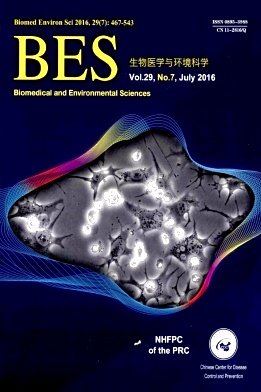Ideal Cardiovascular Health Metrics and Coronary Artery Calcification in Northern Chinese Population:A Cross-sectional Study
doi: 10.3967/bes2016.063
Abstract: Objective Coronary artery calcification (CAC) is a well-established risk predictor of coronary heart disease events and is recognized as an indicator of subclinical atherosclerosis.
Methods A cross-sectional study consisting of 2999 participants aged ≥40 years from the Jidong community of Tangshan City, an industrial and modern city of China, was conducted between 2013 and 2014 to examine the association between the ideal cardiovascular health (CVH) metrics and CAC. The ideal CVH metrics were determined based on the definition of the American Heart Association (AHA). The participants were then grouped into 4 categories according to the quartiles of their CVH metric scores as follows: first quartile (0-2), second quartile (3), third quartile (4), and fourth quartile (5-7). CAC was assessed by using high-pitch dual-source CT, and patients were identified based on thresholds of 0, 10, 100, or 400 Agatston units, as per common practice.
Results The prevalence of subclinical atherosclerosis was 15.92%, 13.85%, 6.76%, and 1.93%, determined by using the CAC scores at thresholds of 0, 10, 100, and 400 Agatston units, respectively. Compared with the group in the first quartile, the other three CVH groups had a lower odds ratio of CAC>0 after adjusting for age, sex, income level, education level, and alcohol use in the logistic regression analysis. The odds ratios in these groups were 0.86 [95% confidence interval (CI), 0.63-1.17; P<0.05], 0.75 (95% CI, 0.55-1.02; P<0.05), and 0.49 (95% CI, 0.35-0.69; P<0.05), respectively. These associations of CAC with the CVH metrics were consistent when different CAC cutoff scores were used (0, 10, 100, or 400).
Conclusion The participants with more-ideal cardiovascular metrics had a lower prevalence of subclinical atherosclerosis determined according to CAC score. Maintaining an ideal cardiovascular health may be valuable in the prevention of atherosclerosis in the general population.
| Citation: | LUO Tai Yang, LIU Xiao Hui, DAI Tian Yi, LIU Xin Min, ZHANG Qian, DONG Jian Zeng. Ideal Cardiovascular Health Metrics and Coronary Artery Calcification in Northern Chinese Population:A Cross-sectional Study[J]. Biomedical and Environmental Sciences, 2016, 29(7): 475-483. doi: 10.3967/bes2016.063 |







 Quick Links
Quick Links
 DownLoad:
DownLoad: